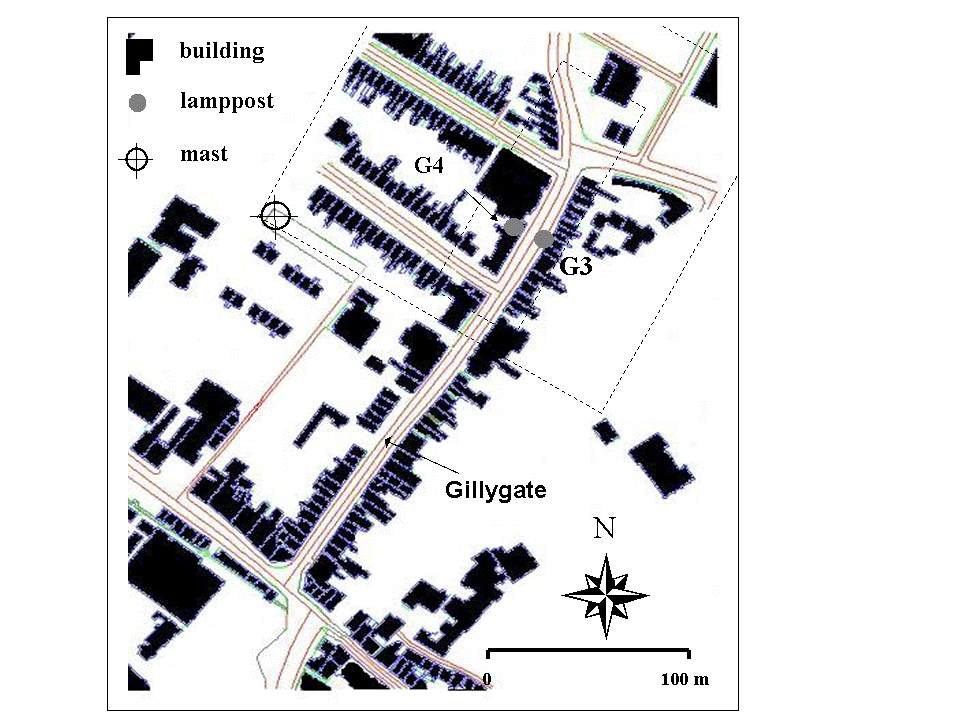
 click on image for better resolution
click on image for better resolution
 click on image for better resolution
click on image for better resolution
The flow in the Gillygate Canyon, York, was modelled using the Smolarkiwicz Model ( Grabowski & Smolarkiewicz, 2002, MWR, 130, 939-56 and Prusa & Smolarkiewicz, 2003, JCP, 190, 601-622). Data for the set up can be found in Dixon et al, 2005, (submitted to Atmospheric Environment). In the current set up, three chemical tracers can be used. The model used is non-hydrostatic, anelastic, Eulerian with terrain following co-ordinates (Gall-Chen & Somerville, 1975). It has a periodic domain, defined by the dotted lines in the l.h. figure below with a uniform z0 of 0.1m, spatial resolution of 1m, and time step of 0.025s. Using neutral profile and an upstream initial wind velocity of u=5m/s from the right of the domain, the model is spun up for 30s. An inert tracer is inserted along the canyon, from the surface in a rectangle 50m long by 6m wide centred between the two lamp posts G3 and G4. The two movie loops below show 30s of simulation at 1s intervals, the centre pane shows the vertical velocity at 2m and the right hand pane, the concentration. (see poster ~ 2Mbytes ~ RCS, 2005, Faraday Poster ) The advantage of this approach is that a full meteorological equation set is used with dynamical and thermodynamical applicability. The street canyon can be nested within a larger scale meteorological domain, or used with a variable vertical and horizontal grid structure. The intention is to develop further applications.

|
 click on image for better resolution
click on image for better resolution
|
 click on image for better resolution
click on image for better resolution
|
![]() For further details email Sarah-Jane Lock
or Alan Gadian
For further details email Sarah-Jane Lock
or Alan Gadian
 |
UWERN is one of the centres and facilities in the NERC Centres for Atmospheric Sciences, NCAS. NCAS carries out the core research programme in atmospheric science funded by NERC. |
20th April 2005